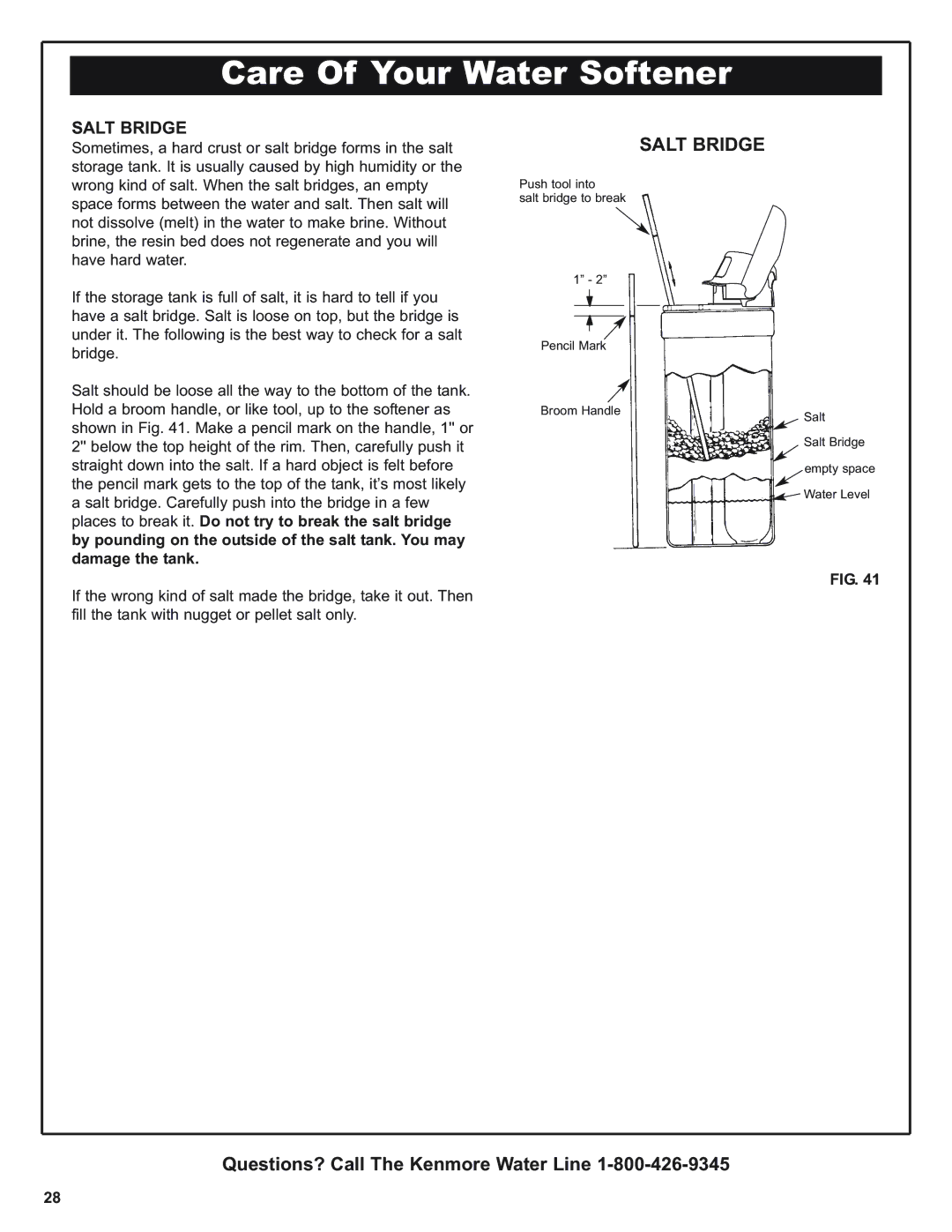
Care Of Your Water Softener
SALT BRIDGE
Sometimes, a hard crust or salt bridge forms in the salt storage tank. It is usually caused by high humidity or the wrong kind of salt. When the salt bridges, an empty space forms between the water and salt. Then salt will not dissolve (melt) in the water to make brine. Without brine, the resin bed does not regenerate and you will have hard water.
If the storage tank is full of salt, it is hard to tell if you have a salt bridge. Salt is loose on top, but the bridge is under it. The following is the best way to check for a salt bridge.
Salt should be loose all the way to the bottom of the tank. Hold a broom handle, or like tool, up to the softener as shown in Fig. 41. Make a pencil mark on the handle, 1'' or 2'' below the top height of the rim. Then, carefully push it straight down into the salt. If a hard object is felt before the pencil mark gets to the top of the tank, it’s most likely a salt bridge. Carefully push into the bridge in a few places to break it. Do not try to break the salt bridge by pounding on the outside of the salt tank. You may damage the tank.
If the wrong kind of salt made the bridge, take it out. Then fill the tank with nugget or pellet salt only.
SALT BRIDGE
Push tool into
salt bridge to break
1” - 2” |
|
Pencil Mark |
|
Broom Handle | Salt |
| |
| Salt Bridge |
| empty space |
| Water Level |
FIG. 41
Questions? Call The Kenmore Water Line
28
